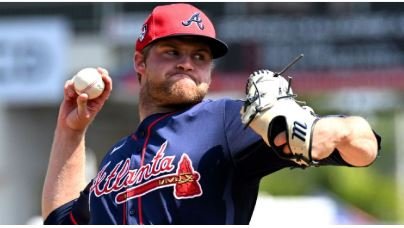
Atlanta Braves fans were frustrated with Bryce Elder’s rough start to the season. Given the team’s dismal 0-7 start and 5-13 record shortly after, there wasn’t much for fans to be optimistic about—and Elder became a convenient scapegoat. Over his first three starts, the right-hander posted a 7.20 ERA, including a rough outing on April 11 against Tampa Bay, when he surrendered nine hits, five runs, and two home runs. Elder, now in his fourth MLB season, was coming off a disappointing 2024 in which he held a 6.52 ERA over 10 appearances, and his early 2025 struggles looked like more of the same.
However, Elder has shown signs of improvement. On April 23 against the Cardinals, he overcame a shaky first inning—where he walked two and gave up an RBI double—to deliver five scoreless innings and complete six total. He allowed five hits, walked three, and struck out two. Braves manager Brian Snitker praised Elder’s rebound, calling his performance key to the team’s win.
Elder looked to build on that progress in his next start, Monday against the Rockies, and he did just that. Despite allowing a three-run homer in the first inning, he bounced back to pitch five scoreless frames, finishing with six innings total, five hits, two walks, and four strikeouts—matching his season high. It marked his second consecutive quality start, though it’s worth noting those outings came against teams with sub-.500 records: the Cardinals (.414) and the league-worst Rockies (.143).

Despite recent success, questions remain. Elder’s fastball velocity averages just 91.7 mph—below the league average for right-handers—and his strikeout rate (13.7%) ranks among the lowest in the majors. Most of his advanced metrics, including whiff rate and pitch value, are also in the bottom 10% of MLB pitchers. Many fans still doubt his long-term potential as a Major League starter. He’s expected to make his next start this weekend against the Dodgers, a much tougher opponent, in hopes of solidifying his spot in Atlanta’s rotation.
Leave a Reply